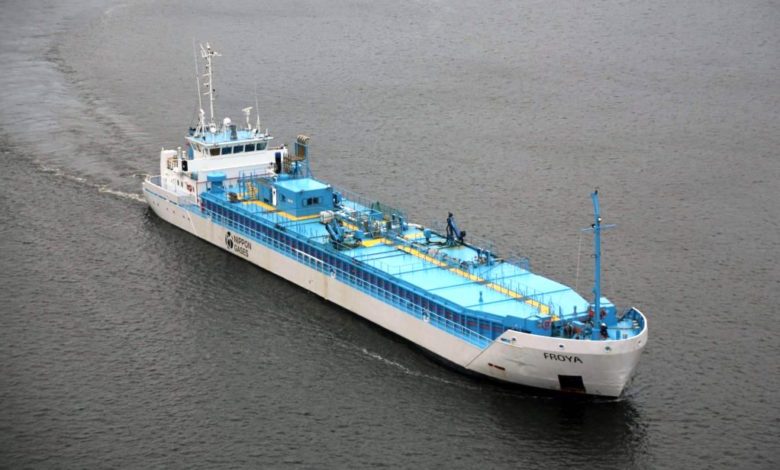Shipping of CO2 goes mainstream with MOL investing in Norwegian pioneer

Shipping of CO2 is going mainstream with news Japan’s largest shipping line is moving into the sector.
Until now, the movement of carbon dioxide cargoes at sea has been a very niche trade, but a host of developments in the last 12 months suggest CO2 has a bright future as growing trade.
Mitsui OSK Lines (MOL) today announced that it has decided to invest in Norway-based Larvik Shipping, a pioneer in this unique trade. Details of the stake and amount invested were not revealed.
Larvik Shipping has managed industrial liquefied CO2 tankers serving Europe for over 30 years. With MOLonboard, the two companies will set about designing and ordering larger ship types to carry the chilled CO2 or dry ice.
“Liquefied CO2 ocean transport plays a key role in carbon dioxide capture utilization and storage value chains as a means of effectively connecting collection sites with storage or usage sites,” MOL explained in a release today. This maritime carbon capture is drawing attention, MOL said, as a step towards realising a low-carbon society.
Other Japanese companies are also eyeing the CO2 seaborne trades.
Japanese shipbuilder Mitsubishi Heavy Industries (MHI) rolled out plans earlier this year to commercialise a CO2 carrier design by 2025 to support its diversification into the carbon capture sector.
In August last year, MHI collaborated with Kawasaki Kisen Kaisha (K Line) and ClassNK to undertake test operations and measurements for what it claims to be the world’s first small scale ship-based CO2 capture demonstration plant. The two-year project, named Carbon Capture on the Ocean, will convert an existing CO2 capture system for an onshore power plant onto a vessel.
Currently, the maximum capacity for transporting liquefied CO2 is approximately 3,600 cu m, or roughly 1,770 tonnes in dedicated CO2 tankers predominantly with specialist operators such as Larvik leading the way.
CO2 shipping has been taking place for 33 years, with the main demand for CO2 coming from the food and beverage industry. The first dedicated CO2 tanker was launched in 1988 in Norway. However, the scale of the yearly CO2 trade flows, and therefore the ship sizes, are much smaller than those needed for CCS projects, something MHI is determined to overcome with its new designs.
Previous CO2 carrier designs have failed to bear fruit. Back in 2010, Hyundai Heavy Industries from South Korea and Maersk Tankers looked into developing next generation liquefied CO2 carriers , but nothing ever materialised from the research.
Another Korean yard, Daewoo Shipbuilding & Marine Engineering (DSME), has also come up with its own CO2 design, though it has not resulted in any orders in the five years since it first published the design.
Carbon capture and storage and opportunities for the shipping industry were under the microscope in a recent issue of Splash Extra.
“CO2 as a commodity could well be a new cargo to transport going forward,” Erik Hånell, CEO of Stena Bulk, told Splash Extra in the in-depth look into the nascent technology to ship and bury CO2.

Forgive me for asking, but what/where is the destination for shiploads of liquified CO2?